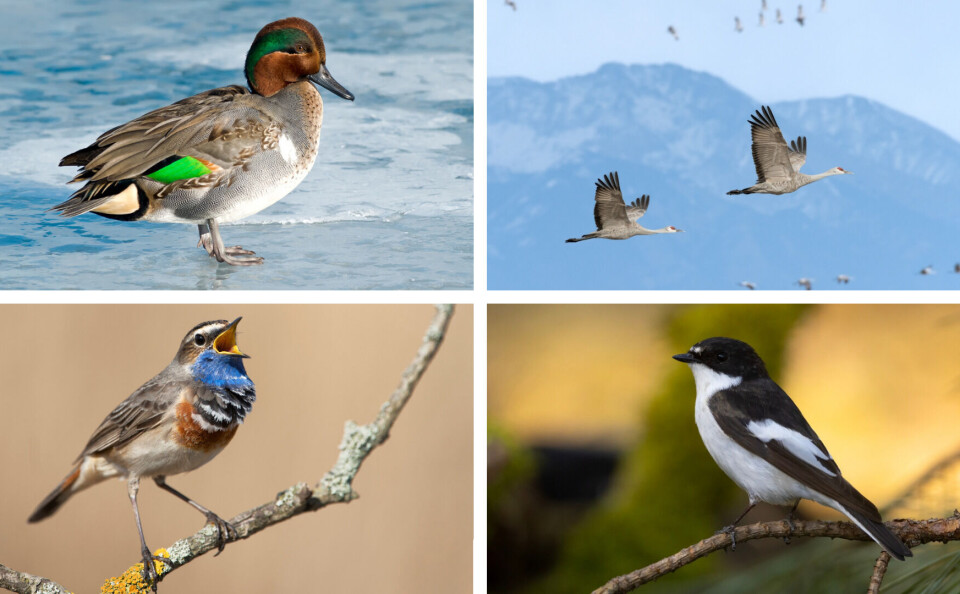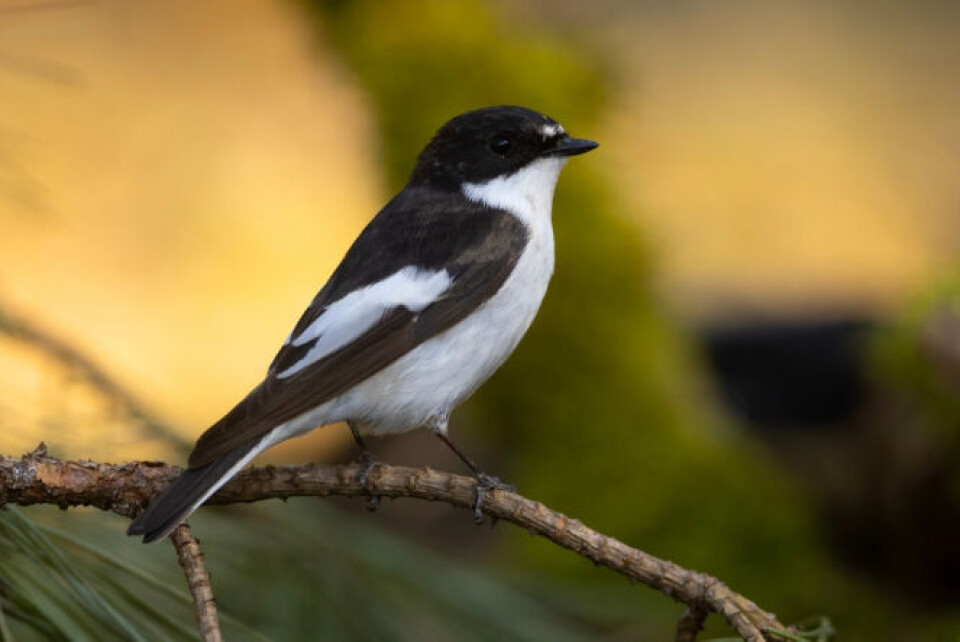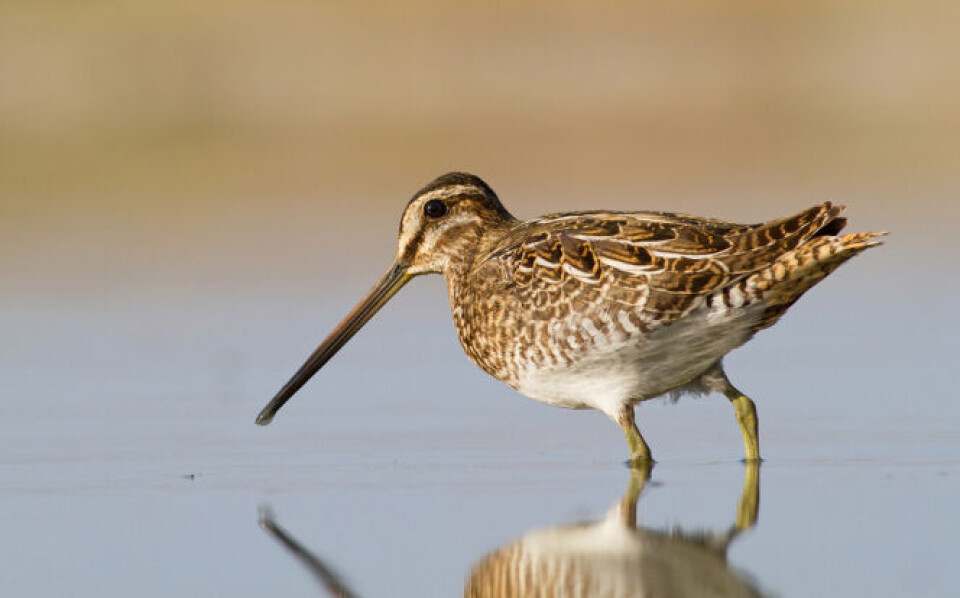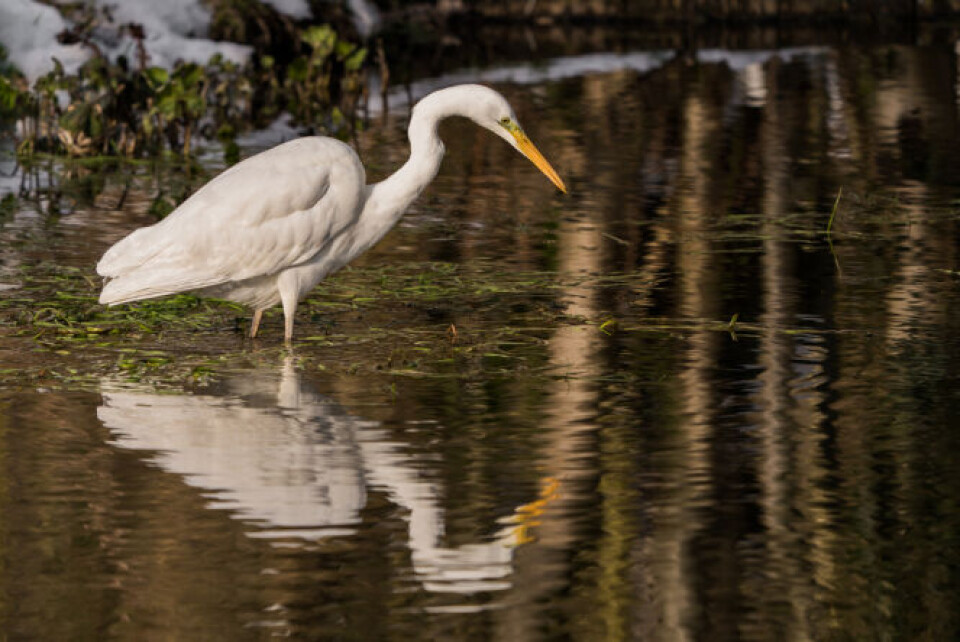-
White storks make strong return in France via nest ‘platforms’ and clipped wings
The Ligue pour la Protection des Oiseaux shares the conservation challenges in saving these birds from extinction
-
Efforts to reintroduce black vultures in France
Plus, wildlife spotter, Jonathan Kemp, shares his experience of searching for bearded vultures around his home in Aude
-
Let your lawn grow, water for birds: how to help wildlife in your French garden
‘It is acceptable to have untidy hedgerows,’ says biodiversity spokesperson.
Migratory birds you may see overhead or stopping off in France
Large, small, white, black or brightly-coloured - here are six species of birds you may spot as they make their journeys

Twice a year, migratory birds fly over and often stop in France as they make their long journeys. Some of them are residential nesters with colonies in France. We look at six species you may see overhead or on land as they take a break.
Migratory birds follow established routes - for example, coming from the north on their way to warmer climates in Africa.
Among the most well-known you can see in France are:
The common teal or sarcelle d'hiver

Paul Reeves Photography / Shutterstock
This is a type of small duck, with green and reddish-brown colouring on its head.
Males also have a wide green eye patch, and a black-rimmed yellow patch on the back of their wings.
They tend to migrate at night, and during the season, flocks of hundreds can be seen crossing the skies of France from the end of February through to mid-March.
However, many are resident breeders in France.
European pied flycatcher or gobemouche noir

Gergosz / Shutterstock
With a round monochrome body, black legs and beak, they are normally seen in deciduous forests and open undergrowth.
Despite their small size, these birds travel thousands of miles during their migration in August to spend winter south of the Sahara.
They feed on spiders and insects including caterpillars, beetles, and millipedes.
From March, they can be seen on their return north in the west of France, particularly at their habitual sites in the Deux-Sèvres and Vendée departments.
Common crane or Grue cendrée

WildMedia / Shutterstock
These birds can measure up to 1.3 metres in height and have a huge wingspan of up to 2.3 metres.
They are easily distinguishable both by their size and by the red patch on the top of their heads.
The common crane travels as far as 2,500 km during migration, from northern Europe to north Africa typically flying in a Y or V shape.
In January, they can be observed in many parts of France, taking a break from their long flight. You can track sightings here.
Common snipe or bécassine des marais

DaniloDjekovic / Shutterstock
This bird measures just 25 cm in length, with a wingspan of 40 cm. It has a mottled brown coat; and light stripes on its head.
It migrates to the temperate zones of Europe and Asia, and lives in wet meadows and reed beds, where it uses its long beak to probe the mud, and dig deep for food.
From mid-February, it can be seen all over France, albeit in limited numbers, as it takes a break on its return to its nesting sites on the Eurasian steppe.
Great white egret, or grande aigrette

Dini Liefferink-Medendorp / Shutterstock
This wading bird is found in Western Europe, Central Asia and Africa, and has a wingspan of up to 1.7 metres.
It has a white coat and a yellow bill (although during the breeding season this is dark orange).
From the end of February, the great white egret makes its seasonal movements, flying in groups of 30 or so. It has a resident population in the wetlands of the Camargue (Occitanie), Dombes (Auvergne-Rhône-Alpes), Sologne and Brenne (Centre-Val de Loire).
Bluethroat, or gorgebleue à miroir

Piotr Krzeslak / Shutterstock
The bluethroat is a colourful, robin-like bird, which can measure up to 15 cm, with a wingspan of 23 cm.
As its name suggests, it is identifiable by its blue throat. Underneath it has black, white and red stripes.
Bluethroats fly up to 1,000 km during the migration period, and travel by night to the Mediterranean coast or Spain. They can travel between 40 and 100 km a day.
Some of these birds spend their winter in France in areas along the Mediterranean crescent.
Related articles
Diary of a birdwatcher in France: Migration
Spot storks flying across France as migration season peaks
The crossroads for bird migration
























